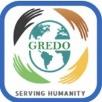-
Who We Are
WHO WE AREThe International Organization for Migration (IOM) is part of the United Nations System as the leading inter-governmental organization promoting since 1951 humane and orderly migration for the benefit of all, with 175 member states and a presence in over 100 countries. IOM has had a presence in Somalia since 2006.
About
About
IOM Global
IOM Global
-
OUR WORK
Our WorkAs the leading inter-governmental organization promoting since 1951 humane and orderly migration, IOM plays a key role to support the achievement of the 2030 Agenda through different areas of intervention that connect both humanitarian assistance and sustainable development. Across Somalia, IOM facilitates transition of Internally Displaced Persons (IDPs) and refugees towards durable solutions by providing services and support for Migrants and Mobile Populations.
Cross-cutting (Global)
Cross-cutting (Global)
- Data and Resources
- Take Action
- 2030 Agenda
The World Bank is providing general support to the Federal Government of Somalia (FGS) and to the Federal Member States (FMS) of Puntland, South West State and the Banadir Regional Administration (BRA) through the Somalia Urban Resilience Project Phase II (SURP-11)to strengthen public service delivery capacity of local governments and increase access to urban infrastructure and services in selected areas. The SURP-11 includes a Contingent Emergency Response (CERC) in its Component 4 that can be included in situations of urgent need of assistance, allowing for rapid reallocation of uncommitted project funds in the event of a natural or man-made crisis.
In March 2022, CERC was activated in response to the expected IDP crisis following the current drought. The International Organization for Migration (IOM). in partnership with its members in the Danwadaag Consortium, will lead on the implementation of the CERC activities. The project will support a government-led emergency response to the intensifying drought crisis by providing critical basic services, including WASH, shelter, and health, to drought-induced, protracted I DPs and vulnerable host communities. Recognizing how recent drought displaced populations will seek to join existing IDPs which often stay very close to neighbouring host communities, it is anticipated that protracted IDPs and vulnerable host community members will benefit as well as newly drought displaced. With emergency basic services and housing, land and property support provided to newly drought displaced populations in the most affected urban areas, the resilience of critical urban centres will be protected and pressure on life saving services will be reduced.
Overall Objective
Reduction in the IDP caseload in Somalia through long-term sustainable solutions for the current displaced population (primary urban centres) and mitigating new displacement (strategic towns).
|
OUTCOME 1: |
Enhanced WASH services for newly displaced IDPs. |
| OUTCOME 2: |
Enhanced basic health services delivery for newly displaced IDPs. |
|
OUTCOME 3: |
Relocation site development and mitigation of forced evictions for new drought displaced populations. |
| Partner Organization | Roles | Responsibilities |
|---|---|---|
|
International Organization for Migration |
Consortium leader | Oversees coordination of CERC activities, subcontract consortium partners, directly implement core components including national cluster management, site development, relocations, WASH and S-NIF |
 Concern Worldwide (CWW) |
Consortium member |
Health services provision in BRA in partnership with Youthlink |
|
Norwegian Refugee Council (NRC) |
Consortium member | Housing, land and property activities lead and lead implementation in Garowe. |
|
Gargaar Relief Development Organization (GREDO) |
Local NGO partner | Health services provision in Baidoa, coordination with local SWS government counterparts. |






